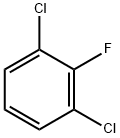Phloroglucinol(CAS#108-73-6)
| Risk Codes | R11 – Highly Flammable R36/37/38 – Irritating to eyes, respiratory system and skin. R34 – Causes burns R43 – May cause sensitization by skin contact |
| Safety Description | S7 – Keep container tightly closed. S16 – Keep away from sources of ignition. S24/25 – Avoid contact with skin and eyes. S45 – In case of accident or if you feel unwell, seek medical advice immediately (show the label whenever possible.) S36/37/39 – Wear suitable protective clothing, gloves and eye/face protection. S26 – In case of contact with eyes, rinse immediately with plenty of water and seek medical advice. S36/37 – Wear suitable protective clothing and gloves. S37/39 – Wear suitable gloves and eye/face protection |
| UN IDs | UN 1170 3/PG 2 |
| WGK Germany | 2 |
| RTECS | SY1050000 |
| TSCA | Yes |
| HS Code | 29072900 |
| Toxicity | LD50 in mice, rats (g/kg): 4.7, 4.0 i.g. (Cahen) |
Introduction
Resorcinol is also known as 2,3,5-trihydroxyanisole. The following is an introduction to the properties, uses, preparation methods and safety information of resorcinol:
Quality:
- Appearance: Resorcinol is a white to pale yellow crystalline solid.
- Solubility: Resorcinol is soluble in water, ethanol and ether solvents.
Use:
- Preservatives: Resorcinol has good antibacterial properties and can be used as a preservative, often used in wood, paper, paint and other antiseptic treatments.
- Synthetic dye intermediates: They contain multiple hydroxyl groups in their structure and can be used to synthesize intermediates of organic compounds such as dyes and fragrances.
- Other applications: Resorcinol can also be used as a preservative and antioxidant in materials such as synthetic resins, rubber, and plastics.
Method:
Resorcinol can be prepared in a variety of ways, and one commonly used method is to obtain it by reacting phenol and hydrazine hydrate under acidic conditions.
Safety Information:
- Phloroglucinol is toxic to the human body, and excessive exposure or inhalation may cause irritation to the skin, eyes, and respiratory system.
- Care should be taken to prevent contact with strong oxidants and strong acids during handling and storage to avoid dangerous chemical reactions.
- Personal protective equipment such as gloves, goggles, and face shields should be worn properly when using resorcinol and avoid direct contact or inhalation.
- Follow proper handling and disposal practices to reduce pollution to the environment.








